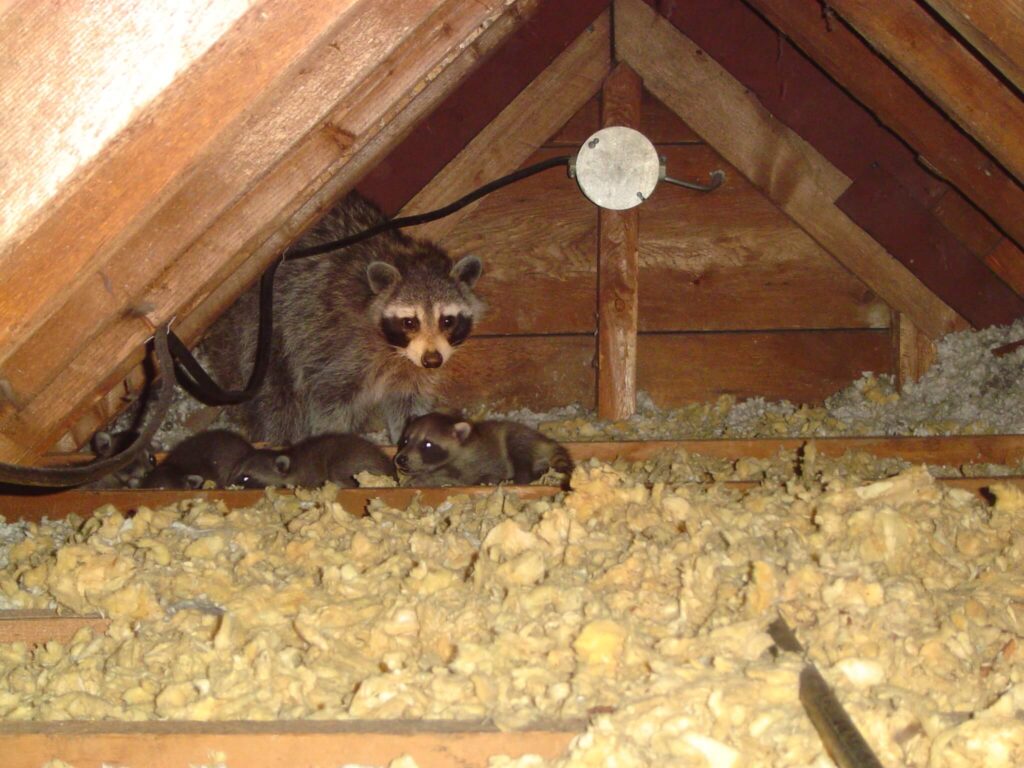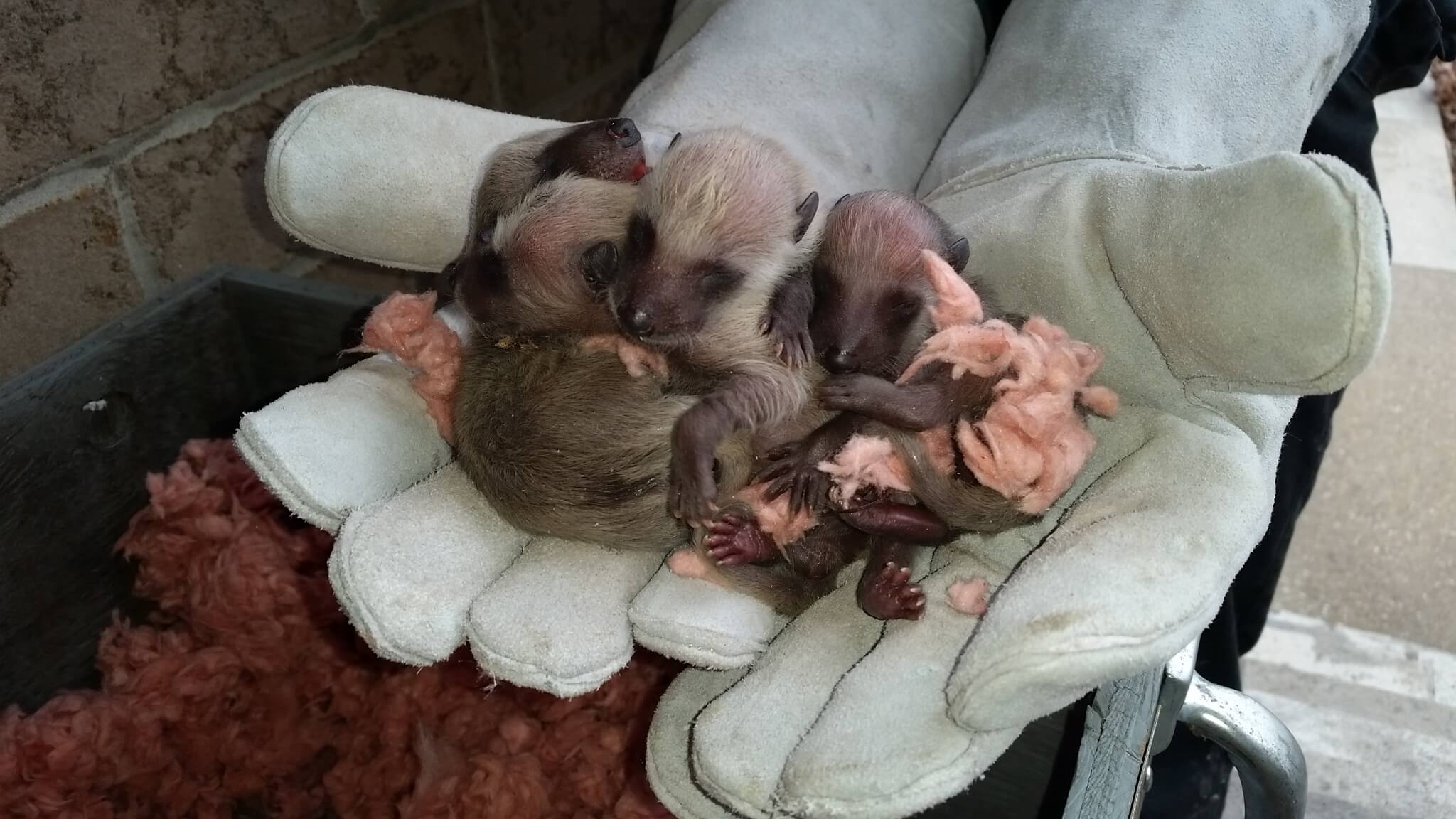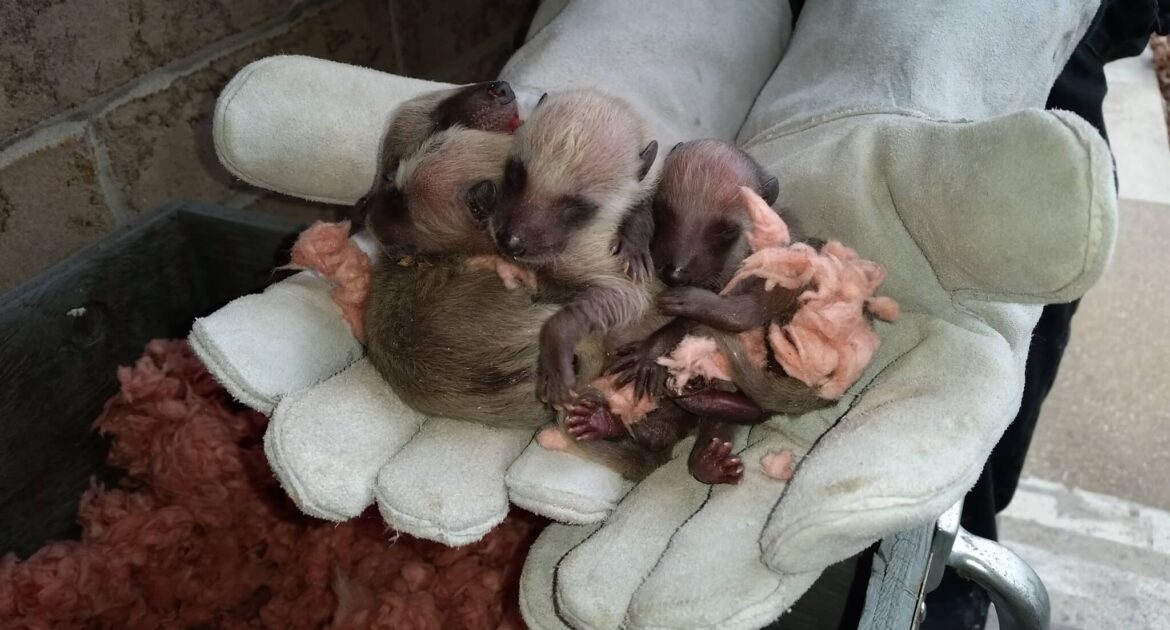Being opportunistic creatures that always press an advantage whenever they find one, raccoons in urban settings choose den sites that are similar to those they would use in the wild. A raccoon’s territory covers approximately one square mile, and within that territory, they may have up to 10 different den sites. That way, the raccoon can sleep in whichever den is most convenient when the time comes. For this reason, you do not need to worry about a raccoon family that you have evicted from your home with the help of wildlife removal in Markham. The mother raccoon can simply relocate her babies to a different den site.
It is unusual to see raccoons active during the day because they are nocturnal. Knowing where they may make dens on your property can help you determine whether they are present. If so, you need to call for raccoon control.
Where Do Raccoons Sleep in the Wild?
In the wild, raccoons do not sleep on the ground. They are relatively small animals and, while they are pretty adept at defending themselves when awake, they would be vulnerable to larger predators if they were to sleep out into the open. This is especially true of raccoon babies, also called kits, which are small and helpless during the first few months of their life and would be easy prey if they stayed out in the open.
Raccoons make dens in places that provide some cover. For example, they may choose to sleep in a hollowed-out log that not only hides them from view but makes it more difficult for predators to catch them.
Another way that raccoons evade predators is by making dens in the branches of trees. Raccoons are excellent climbers, and many of the animals that prey on them are not. This makes a tree a good place for a mother raccoon to protect her kits. The kits are completely dependent on their mother for the first few weeks of their lives. They are safe in the tree until they are old enough to climb down on their own and fend for themselves.
Where Do Raccoons Sleep in Urban Settings?
In human-shared environments, raccoons often make nuisances of themselves by moving into buildings. However, they do not mean any harm. They are simply following their instincts and making dens in places that resemble those they would choose in the wild, den sites that are no longer readily available because of human encroachment.
Because raccoons typically make dens in trees, they often end up in residential attics. Like trees, attics provide protection from predators by being high up off the ground, and they have the added advantage of keeping them and their babies warm.

Raccoons also frequently end up in crawl spaces. These areas are warm and cozy, like the inside of a hollow log. They provide protection from humans as well as predators because they are so small that humans typically stay out of them unless they have a particular reason to be there.
Another rarely frequented spot where raccoons may make a den is the storage shed. If the door is not locked but merely latched, raccoons may be able to open it with their dextrous paws and make themselves at home. Even if the door is firmly padlocked, raccoons may find a space under the shed in which to build a den.
How Can Skedaddle Help With Wildlife Removal in Markham?
Our technicians remove wildlife such as raccoons safely and humanely from your home. This prevents harm to both you and the animal. Babies are placed in a heated box near the entry site so the mother can collect and relocate them to another den site. Once all the animals are safely removed, we seal off entry points to prevent the animals from getting back in.




